- Tony Wright’s Saturday column
- Environment
- Sustainability
- Biodiversity
This was published 1 year ago
Sammi the elephant seal has taken a wrong turn, and so have we
By Tony Wright
A vastness of blubber and attitude lolls on the shore of a surf beach in south-west Victoria.
Sammi the elephant seal is a long way from his home in remote sub-Antarctic islands.
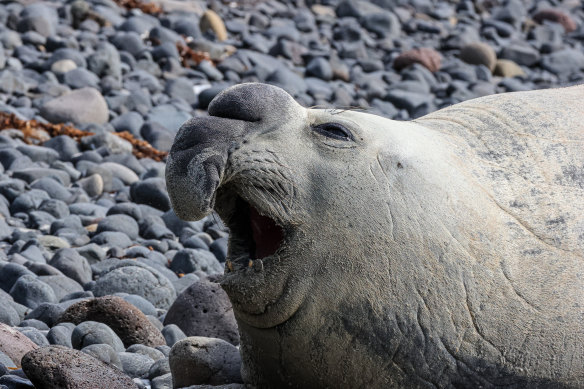
Sammi the elephant seal: best to keep your distanceCredit: Allen McCauley
Still, if he has lost his way, he appears perfectly content to sprawl on this pebbly beach near the town of Portland, claiming it as his current territory.
Sammi – for that is what the locals have dubbed him – seems lifeless. Only his eyes alert you that he is awake to your merest move.
Best to keep your distance. However unlikely it seems, elephant seals can outrun a human on sand.
He takes an occasional excursion through the waves to catch a seafood dinner. His lumbering mass, a tonne and more even though he is not much more than half grown, transforms in the water.
Truth is, all the sea creatures along this remote coast are living wonders.
Out there, Sammi is elegant and fast moving, so adapted that when he reaches adulthood in a few years, he’ll be capable of diving to more than 2000 metres and staying down for 90 minutes, having exhaled first to avoid the bends. He holds oxygenated blood in abdominal cavities.
He is, in short, a living wonder.
Truth is, all the sea creatures along this remote coast are living wonders. Pods of orcas, known as killer whales, have visited in the past couple of weeks.
Shortly after the orcas were seen hunting around Bridgewater Bay, a great white shark washed up on the beach, chomped clean in two. Orcas, wolves of the sea, enjoy a meal of shark liver.
They have no shortage of menu.
Great whites have been tracked cruising all the way from Ballina in northern NSW to hunt fur seals in Victoria’s south-west.
Out on the point of Bridgewater Bay, a cave opens to the water, home to the largest mainland colony of seals in Australia.
When pups are born in November and December (female seals can delay their pregnancies, so the colony becomes a giant nursery as summer begins), juveniles soon learn to surf the waves.
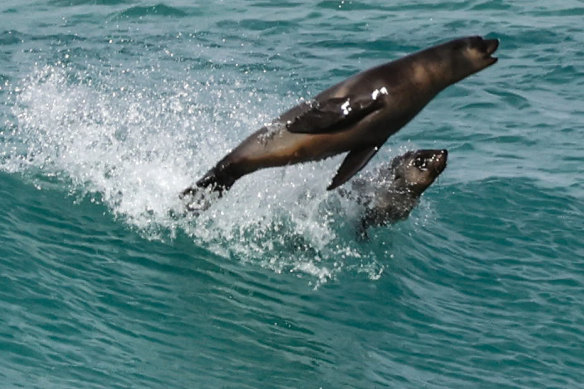
Seal pups surf the waves of Bridgewater Bay, south-west VictoriaCredit: Allen McCauley
In a few weeks, the coast will be torn by south-easterly winds, forcing the surface of the sea out to the west.
To compensate, chilled water rushes up from the deep through the canyons of the continental shelf, where the Australian land mass finally tore from Antarctica about 30 million years ago.
The chilled water of the upwelling brings to the surface clouds of phytoplankton and trillions of tiny krill. It sets off a riot. Gannets and other seabirds wheel and dive on schools of fish gathering for the nutrients that suddenly fill the waters.
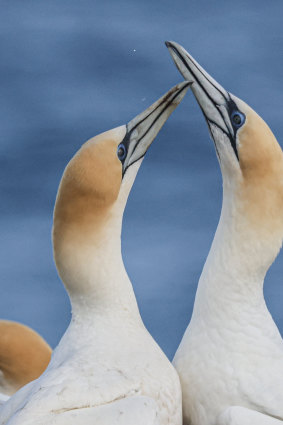
Gannets rely on a healthy, fish-rich sea, for their existence.Credit: Allen McCauley
Blue whales, the largest creatures to inhabit the Earth, follow to feast on the krill.
Here is a chain of life, every species reliant on all the others, the whales singing.
Portland has produced communities of hardy amateur photographers who perch on cliffs all year round, happily capturing the parade.
A doyen of Portland’s camera people, a bearded fellow named Allen McCauley, has become so attuned to the rhythm of the sea that he swims in it each morning before setting out to capture the latest episodes of the maritime spectacle.
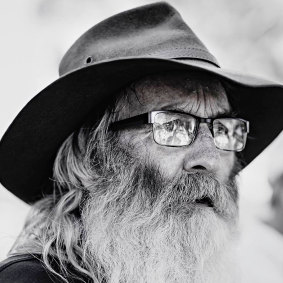
Allen McCauley, doyen of the south-west’s community of photographers documenting the riot of coastal sea life.
I find McCauley perched on a rock near Sammi, quietly contemplating the giant visitor from sub-Antarctica. Sammi is still a juvenile, judges McCauley, maybe seven years old.
McCauley and his fellow photographers have an embarrassment of choices with which to fill the lenses of their cameras.
Humpback whales breach within sight of the cliffs, hurling themselves clean out of the water. Southern right whales arrive in winter to calve. Fur seals dance. Dolphins leap. Tuna hurtle along in schools. Birds wheel.
But if photographers find themselves enchanted by the coast, so do giant energy companies whose interests have less to do with the bursting energy of the creatures than the energy that might lie beneath the seabed.
Right now, one such company is seeking permission to undertake “seismic testing” to establish whether gas sits beneath the waters all along Victoria’s south-west coast into South Australia and south to Tasmania.
It means blasting the seabed with high-powered airguns every 10 seconds for months at a time – each blast producing an immense 250 decibels, about double the level of a jackhammer or the explosion of a shotgun. The echoes are measured to map potential gas reserves.
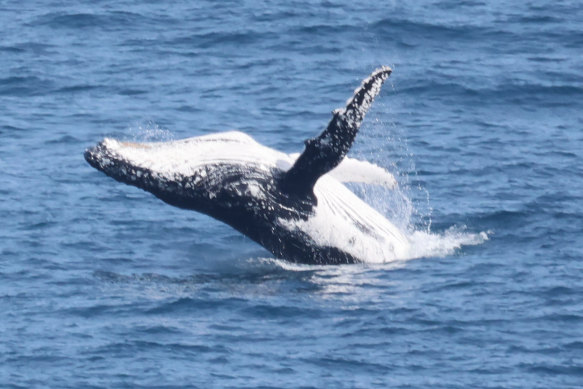
A humpback whale breaches beneath the cliffs of Cape Nelson, near Portland.Credit: Allen McCauleyh
Numerous environmental, community, fisher and First Nations groups are mightily opposed.
They fear an artificial and continuous underwater cacophony will disturb the marine chain of life, deafen whales or destroy their ability to communicate through singing, remove the ability of lobsters to get off their backs if toppled, and kill vast areas of krill. In other words, empty the sea of its great festival.
My colleague, environment reporter Miki Perkins, explains it in detail.
Meanwhile, Sammi lolls on his adopted beach, his journey home – which at some point he must undertake to seek out and fight for a harem – an obstacle course of killer whales and sharks and the vastness of the ocean.
And maybe, much, much worse: ceaseless human-made underwater noise, upending the food chain, confusing creatures that rely on sound to communicate and navigate.
And for what?
Unearthing new sources of carbon to be burned, adding to the man-made climate change that is already ravaging Sammi’s sub-Antarctic home territory.
Makes less sense than an elephant seal who’s taken a wrong turn.